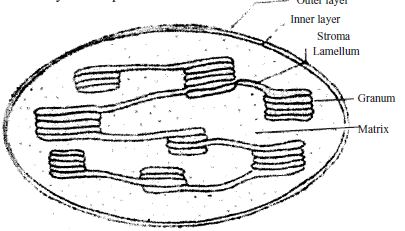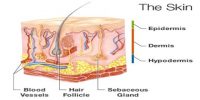Chromoplast are variously coloured, other than green, mostly yellow and red in colour. They are also variable in shape. Chromoplast occurred in coloured part of plants. e.g. petals, coloured fruit and seeds, roots of carrot etc.
Function: Flowers are coloured and beautiful due to their presence.
Chloroplast: They possesses green pigments named chlorophyll in excess as a result they are green. Other pigments are also present to some extent. Every cell may contain one or more chloroplast. In higher plants the shapes of chloroplast is lenceolate. In Algal cells their shapes are of various types, e.g. cup shaped, spiral, reticulate, star shaped. semicircular etc.
Structure of chloroplast: The following parts make Chloroplast:
- A bi-layered semipermiable membrane surrounds the whole chloroplast. It is composed of protein and lipid. This is called lipoprotein.
- A hygroscopic matrix surrounded by a membrane is there. This matrix is called stroma.
- In the stroma, 40-80 well-arranged barrel shaped grana (sing: granum) are present. In one granum there are 5-25 granum disc. Inside the granum disc, there are spaces. Probably chlorophyll and other photosynthetic materials are present in this chamber.
- Some granum discs of two adjacent grana are connected by minute tubular bodies, which are called stroma lamelli.
- Many crystalline bodies are arranged in the membrane of grana disc. These are called quantosome. In the dark phase of photosynthesis, carbon-di-oxide is assimilated mainly in the quantosome.

Fig:- Different Parts of Chloroplast (Seen under Electron Microscope and then simplified)
Function: Its function is to prepare carbohydrate food by the process photosynthesis.














